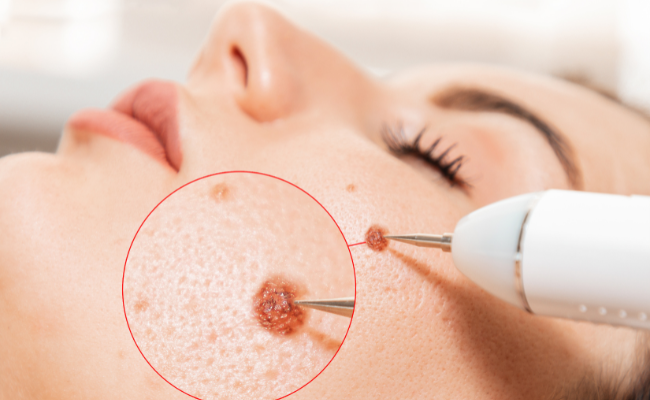How to Treat Flat Warts?
- November 15, 2023
- No Comments

What are Flat Warts?
Flat warts, also known as verruca plana, are a type of skin growth caused by the human papillomavirus (HPV). These warts are characterized by their flat, smooth appearance, often with a slightly raised edge. Unlike common warts that tend to be rough and elevated, flat warts are typically smaller and can be numerous, clustering in groups. They commonly appear on the face, neck, hands, and legs, and are more prevalent in children and young adults.
Why Do Flat Warts Occur?
Flat warts develop when the skin comes into contact with the HPV virus. The virus enters the body through tiny cuts or scratches in the skin, leading to the formation of warts over time. The risk of contracting HPV and developing flat warts increases in situations where personal hygiene is compromised or in environments where the virus is easily spread, such as communal showers or swimming pools.
How to Identify Flat Warts?
Recognizing flat warts is crucial for early intervention. These warts are often flesh-colored or slightly lighter, making them less noticeable than other types. Their flat surface and small size, usually ranging from 1 to 5 millimeters, can make them challenging to identify without close inspection. Flat warts can occur in clusters, creating a patchy appearance. Unlike other warts, they may not cause pain or discomfort unless irritated or scratched.
Treatment Solutions for Flat Warts:
- Topical Treatments: Over-the-counter creams and ointments containing salicylic acid are commonly used to treat flat warts. These products work by breaking down the layers of the wart, eventually causing it to peel away. It's essential to follow the instructions carefully and be patient, as these treatments may take weeks to show results.
- Prescription Medications: In some cases, a healthcare professional may prescribe stronger medications to eliminate flat warts. These may include topical retinoids or immunotherapy creams that stimulate the immune system to target the virus.
- Cryotherapy: Cryotherapy involves freezing the wart using liquid nitrogen. The freezing process destroys the wart tissue, allowing it to fall off over time. This procedure is typically performed by a healthcare professional and may require multiple sessions for effective removal.
- Electrosurgery: Electrosurgery involves using an electric current to burn off the wart tissue. This method is usually reserved for more stubborn or larger warts and is performed by a dermatologist or other qualified healthcare professional.
- Laser Therapy: Laser treatment is another option for removing flat warts. The laser targets and destroys the blood vessels feeding the wart, causing it to shrink and eventually fall off. Laser therapy is typically performed in a healthcare setting.
Benefits of Treating Flat Warts:
- Cosmetic Improvement: One of the primary benefits of treating flat warts is the cosmetic improvement of the affected skin. Removing these warts can enhance the appearance of the skin, especially in visible areas like the face and neck.
- Prevention of Spread: Treating flat warts helps prevent the spread of the HPV virus to other parts of the body or to other individuals. Since these warts can be easily transmitted through direct or indirect contact, prompt treatment reduces the risk of further infections.
- Reduced Discomfort: While flat warts are not usually painful, they can become irritated or cause discomfort if scratched or rubbed. Treating them eliminates the source of potential irritation, leading to improved skin comfort.
- Boosted Confidence: Skin conditions, including flat warts, can impact an individual's self-esteem and confidence. Removing these warts can contribute to an improved sense of well-being and confidence in one's appearance.
- Prevention of Complications: Although flat warts are generally harmless, leaving them untreated may lead to complications such as infection or the development of more extensive wart clusters. Timely intervention reduces the risk of these complications.
Comments (0)